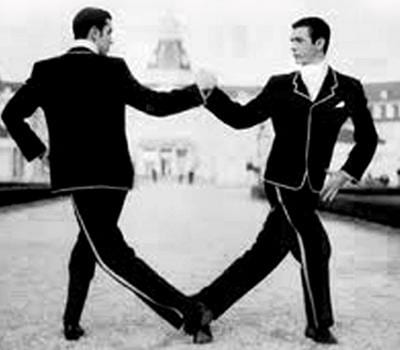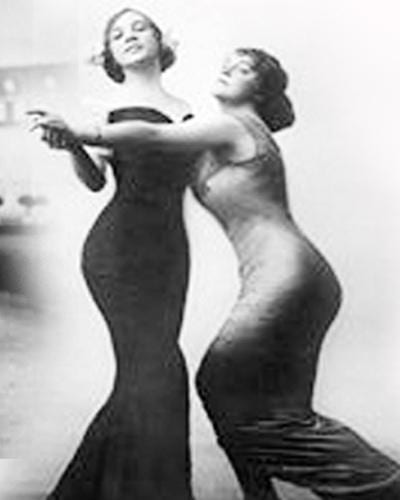“I think Montreal’s queers are ready for a different kind of dance party,” says Miriam Ginestier, queer culture promoter and creator of Meow Mix, Montreal’s monthly lesbian cabaret.
Along with her partner, French filmmaker Viva Delorme, Ginestier is making that happen by producing six weeks of sensual Argentine tango classes at la Tangueria.
The six-week course is aimed at beginners and teaches the basics of posture, how to walk and how to listen to your partner. Each week, dancers will learn a new step, building up a dance vocabulary.
“We are both excited by the idea of more queers dancing tango,” says Delorme. “We’re dreaming of a queer tango ball!”
“It is such an addictive dance, and while I don’t mind dancing with men, I’d love to dance with more women,” Ginestier adds. “I’ve always thought how wonderful it would be if there was a critical mass of queer dancers. It’s a whole other way of communicating, socializing, getting pleasure, and I want to share it with my community.”
Born in the late-19th century in the Buenos Aires suburbs, Argentine tango is a social, highly gendered dance based on improvisation.
“Traditionally, the man leads and the woman follows, which makes it so exciting to queer-ize,” enthuses Delorme.
“It’s the most difficult and complex of all the partner dances,” Ginestier says. “And it’s extremely sensual, generally danced quite close. But because of the way it’s structured, you can experience these sensual moments with strangers, without disturbing your comfort zone, because it’s about the dance.”
Delorme is quick to emphasize that participants don’t need any experience, or even a partner. Whether or not you arrive in a pair, “you’ll always have someone to dance with, and it’s usually a good thing to change partners during the course.”
Delorme started taking tango classes a year and a half ago in order to accompany Ginestier, who’s been dancing for 10 years. “That was very challenging as I never, ever danced anything before,” Delorme says. “At first, I had no idea if I would even like it, but very quickly I’ve been hooked. Now I could dance several times a week.” Delorme plans on using the beginner class to learn the follower role.
While participants can choose to learn both parts in the class, “it’s probably easier if people stick to one role for six weeks,” says Ginestier. “Leading is definitely more difficult than following. But learning both, eventually, is the ultimate. Viva and I are keen to learn both roles so we can switch mid-dance. That’s the beauty of queer tango.”
“I think it’s important for queer people to feel free to learn the role they want to, no matter what their gender,” Delorme says. “When you’re the only leading woman or the only following man in a class, it can be awkward sometimes. But when regular classes are full of people who don’t think that your part is linked to your gender, we’ll be glad to stop queer classes.”
As for whether or not non-queers are welcome, Delorme says, “Queer tango is totally beyond sexual orientation. The only thing required is to want to dance and play with parts.”


 Why you can trust Xtra
Why you can trust Xtra


